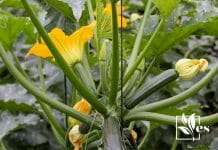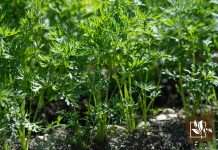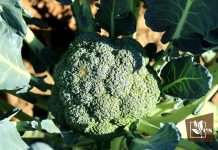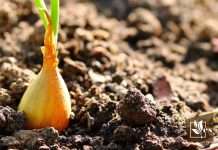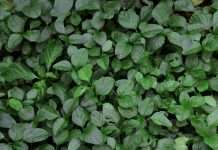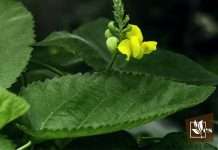- 6 Cactus Plants With Pink Flowers: Stunning & Little Effort - March 28, 2024
- 6 Alternative To String Trimmer: Useful Common Options - March 28, 2024
- Oil Coming Out of Lawn Mower Exhaust? Reasons and Fixes - March 28, 2024
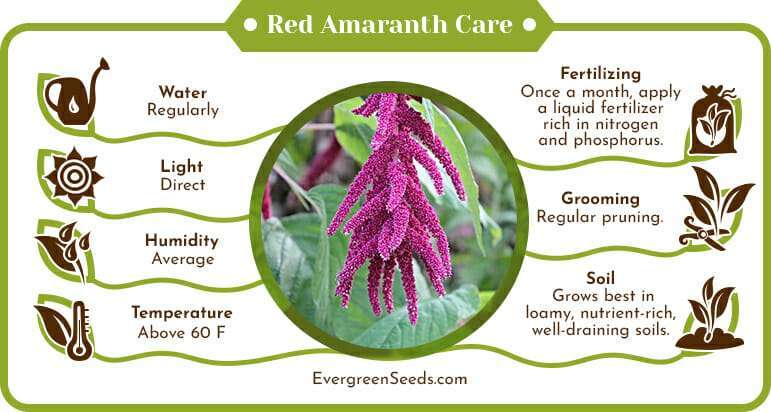 Red amaranth of the Amaranthaceae family is the gift that keeps on giving. Not only does it offer delicious stems and leaves you can eat like spinach, but it’s also a healthy and nutritious grain.
Red amaranth of the Amaranthaceae family is the gift that keeps on giving. Not only does it offer delicious stems and leaves you can eat like spinach, but it’s also a healthy and nutritious grain.
In this grow-guide, our gardening experts reveal their secrets to ensure a bountiful harvest in your garden of this Amaranthus genus plant.
JUMP TO TOPIC
What is red amaranth?
Red amaranth (Latin name: Amaranthus cruentus) is an annual flowering plant native to Central and South America. Commonly cultivated worldwide as an edible plant, red amaranth is in the list of Chinese spinach varieties but is still grown for its grain.
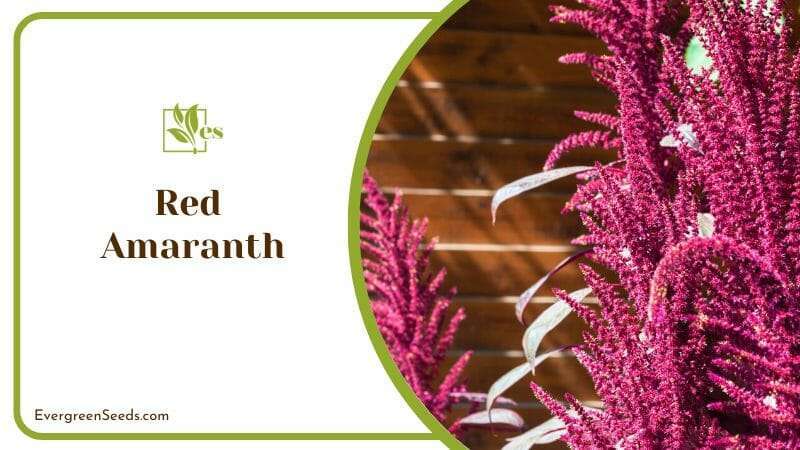 Archeological findings show that amaranth species were grown as grain crops for almost 8,000 years.
Archeological findings show that amaranth species were grown as grain crops for almost 8,000 years.
This herbaceous plant can grow very tall, quickly reaching over 6 feet (1.8 meters). As the name suggests, red amaranth has dark red or purple leaves and towering clusters of vivid red, pink or purple flowers. It is popular with gardeners for its high ornamental value and nutritious seeds and valued prized for their health benefits.
Showy and versatile, red amaranth has many uses.
The way we see it, it deserves a spot in every garden, even if it’s just to add a touch of color. Growing it is fun and easy, and you can use it in your kitchen all summer long.
Ready to give it a try? Here’s what you need to know.
How to grow
Red amaranth is a plant that’s easy to grow. It’s perfect for both beginners and expert gardeners.
The main thing to remember is that, in its native range, amaranth grows in warm, sometimes even tropical climates. But with the right timing and preparation, it can make a stunning addition to your garden wherever you live. This means that it can tolerate direct sunlight but only if you plant it in its native climate.
Let’s take a look.
Growing outdoors
Red amaranth takes at least 90 days to reach maturity. You can plant it outdoors in late spring, but to get a head start on your crop, we recommend starting it indoors about 6 weeks in advance. Red amaranth is not tolerant to frost, so if you sow it in your garden too early, the young plants will either die or bolt before they get a chance to develop fully.
– Germination
The seeds are tiny and don’t require any special treatment before planting, such as soaking. Sow the seeds in compostable seedling pots in a nutrient-rich potting mix. Keep the soil moist and ensure that indoor temperatures don’t drop below 60 °F (15 °C). The seedlings should make an appearance after about 10 to 14 days.
If you live in an area with a mild climate with no chance of frost, you can sow your red amaranth in the garden directly. Otherwise, it’s best to start the seeds inside and transplant them in your garden when temperatures are steady above 70 °F (21 °C). Make sure to harden the young plants in the week before transplanting by taking them outside for a few hours each day and bringing them back inside during the night.
– Soil
Red amaranth isn’t too pretentious for soil, but it does grow best in loamy, nutrient-rich, well-draining soils. It can also tolerate mildly acidic to neutral soils, with a pH ranging from 4.5 to 8.0. Before sowing or transplanting red amaranth, prepare the substrate by incorporating plenty of compost and organic matter, especially if you have compacted, clay-heavy soil in your garden.
– Space
Given that red amaranth can grow quite tall, provide the plants with ample space in your garden. Seeds should be sown 4 inches (10 cm) apart, then thinned out to 12 inches (30 cm) apart. The same spacing applies for the plants that were started indoors and are ready to be transplanted.
– Watering and fertilizer
Provide your red amaranth with regular watering, but avoid soaking the soil. When in doubt, it’s better to err on the side of under-watering. Red amaranth can tolerate a mild drought, but it is susceptible to overwatering, which will lead to root rot and other fungal diseases. Once a month, apply a liquid fertilizer solution rich in nitrogen and phosphorus to stimulate further growth. Tap water should be fine, but purifying it first will make it even better.
Can you grow red amaranth in containers?
Although red amaranth grows best in the garden, you can also grow it in containers. One thing to bear in mind is that its roots are very long, so you will need to plant it in the biggest container you can find. A 10 gallon (38 liters) pot with draining holes should do the trick.
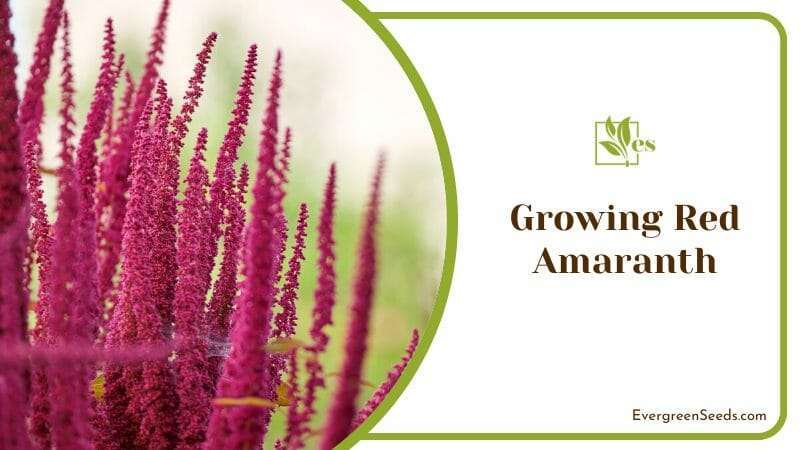
– Use the right soil mix
Fill the pot with a nutrient-rich soil mix, as well as perlite or coir, to improve drainage. The seeds can either be started in compostable seedling pots or sown in the pot directly. When sowing straight in the container, remember to thin out the plants once they have at least 2 sets of leaves each.
We recommend keeping two plants per pot for optimal growth, especially if you’re growing red amaranth for grain.
– Take care with watering!
Pay close attention to the soil humidity levels when growing red amaranth in containers, as it’s much easier to overwater them than it is in your garden. Check the soil before watering by sticking your finger in, and only water when the top inch feels dry to the touch.
– Size
Red amaranth plants grown in containers tend to be smaller than those in the garden and usually grow to a height of about 3 feet (90 cm). They make some genuinely stunning ornamental plants with their burgundy leaves and vivid pink flowers as a bonus point.
When to harvest
Red amaranth takes anywhere between 90 and 120 days to reach maturity. However, you can harvest it at various stages of the plant’s growth, depending on what plans you have for it.
– Harvesting red amaranth leaves and stems
You can pick leaves and young stems when the plant is at least 1 foot (30 cm) tall. Regular pruning of lateral stems will encourage the plant to become bushier. You can also use the cut-and-come-again method on the main plant. Using a sharp gardening knife, cut the stalk 10 inches (20 cm) above the ground and use it as needed. Your red amaranth will grow back and will be ready to be harvested again in another month.
When to harvest red amaranth seeds
If you want to harvest red amaranth seeds, you will need to be a bit more patient. Allow the plant to bloom, and wait until early autumn for the seeds to ripen. On average, it takes about 4 months from sowing before amaranth seeds are ready to be harvested.
The easiest way to tell if you can pick the is when the flower heads are dried and covered in a light brown ‘fluff’ (the chaff). Red amaranth produces thousands of small seeds, and often they are so heavy that the entire plant starts bending down.
– How to harvest red amaranth seeds
Harvesting red amaranth seeds are surprisingly easy. The best time to do this is in the afternoon, on a dry day. Avoid picking the seeds after the rain or in very humid weather, as they won’t fall off so quickly, and the chaff will stick to them.
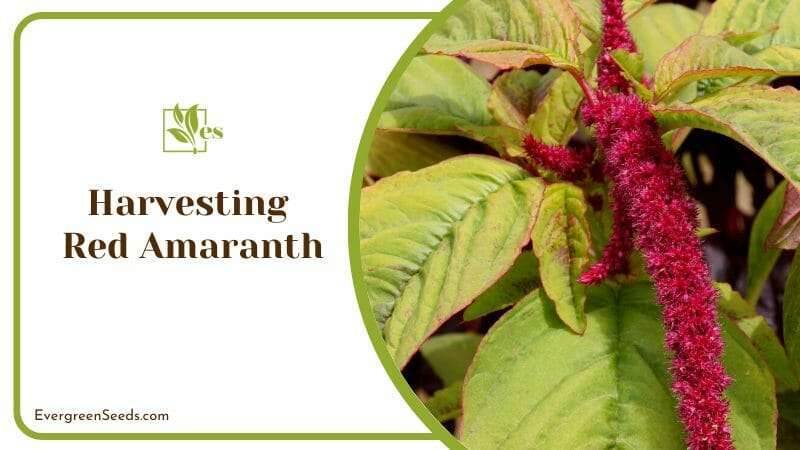
Use a pair of gardening scissors and cut the entire flower head off your amaranth plant. Shake the flower head in a paper or plastic bag. The small seeds should come off instantly, especially if they’ve had plenty of time to dry out. Then, pour the seeds in a fine-mesh strainer, and shake them to remove the chaff and other fine debris. Spread the seeds on paper towels or parchment paper and allow them to dry out further in an airy room to prevent mold.
Each red amaranth flower can produce at least 6 ounces (170 grams) of tiny, dark red seeds. Once harvested, you can store the seeds in glass jars or airtight containers for at least 1 year. Amaranth seeds are slightly oily, so if you keep them in humid and hot conditions, they can quickly become rancid.
Uses
All parts of red amaranth are edible. You can harvest the leaves and their young, tender stems throughout the summer, and you can use them the same way as spinach or even micro-greens. They have a mild, sweet flavor, with nutty and earthy notes. The edible leaf of red amaranth has a delicate texture, so it’s best not to cook it for too long. You can gently blanch or boil it, add it to soups or stir-fries, or even eat raw.
The most prized part of the red amaranth plant is the grain. The small red seeds are an excellent source of protein, vitamin C, and minerals such as calcium, magnesium, and iron. They also help lower cholesterol levels, reduce inflammation, improve digestion, and are a tasty gluten-free alternative to other grains, such as wheat.
Red amaranth grain has a unique nutty flavor, and you must soak it for 6 to 8 hours before cooking. Use it as a substitute for quinoa or other cereals by using it to make pilaf or even amaranth risotto. You can also make a delicious breakfast porridge using amaranth seeds and even pop the seeds to make amaranth popcorn. If you have a grain mill, you can ground the seeds into flour, which you can then use in gluten-free desserts or other baked treats.



